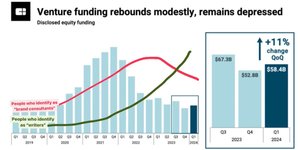Sublime
An inspiration engine for ideas
Ancient, this shape-song. In it, rhythm of tide, of moon-ripple played out on night water. Of buoy-clang near the beach and shore of man. Of crab-scuttle and claw-clack. Of fish-dart and propeller-chug. Of whale-song in the wave. Rhythm of the struggle in the jaw of the shark, the loss of limb and spray of ink as the hero battles back against death
... See moreRay Nayler • The Mountain in the Sea
In the twentieth century, the biodiversity crisis, as it eventually came to be known, only sped up. Extinction rates are now hundreds—perhaps thousands—of times higher than the so-called background rates that applied over most of geological time. The losses extend across all continents, all oceans, and all taxa. Along with the species formally cate
... See moreElizabeth Kolbert • Under a White Sky
For Arendt, the problem was not that we kept creating things in our image; it was that we imbued these artifacts with a kind of transcendent power. Rather than focusing on how to use science and technology to improve the human condition, we had come to believe that our instruments could connect us to higher truths.
Meghan O'Gieblyn • God, Human, Animal, Machine: Technology, Metaphor, and the Search for Meaning
The animacy of the world is something we already know, but the language of animacy teeters on extinction—not just for Native peoples, but for everyone.
Robin Wall Kimmerer • Braiding Sweetgrass: Indigenous Wisdom, Scientific Knowledge and the Teachings of Plants

Donna Haraway, one of the cyborg’s most notable theorists, named long ago what many of us unconsciously sense in the presence of high-tech tools: “Late twentieth-century machines have made thoroughly ambiguous the difference between natural and artificial, mind and body, self-developing and externally designed, and many other distinctions that used
... See moreSara Hendren • What Can a Body Do?: How We Meet the Built World
How to Raise Your Artificial Intelligence: A Conversation With Alison Gopnik and Melanie Mitchell
Julien Crockettlareviewofbooks.org
Lily Belasco showed me the bathrooms, told me there were emergency exits in most but not all directions, then pressed a flashlight into my palm. She explained that the depot connected to other bygone facilities that were not fully mapped. “But really,” she said, “nothing’s radioactive anymore.”